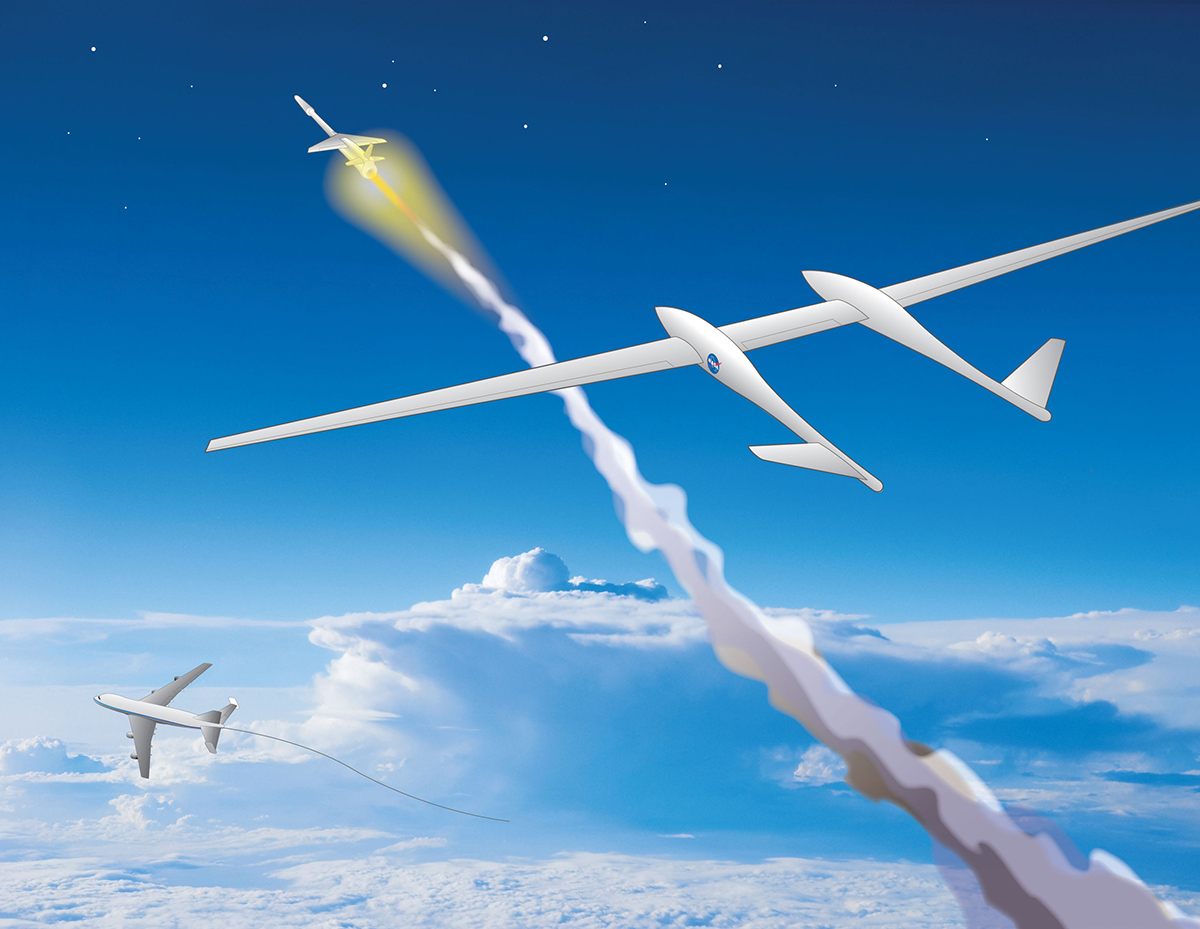NASA’s Armstrong Research Center has developed a way to launch rockets from a glider that is towing an airplane behind it. It will increase the carrying capacity of carriers by 70 percent compared to a ground launch.

How to launch rockets from a glider?
The NASA Armstrong Research Center has developed an air launch program for TGALS space carriers. It provides for a scheme in which a business jet class aircraft slips behind a glider, on which the rocket is placed.
After the plane reaches an altitude of more than 12 km, it detaches the glider from itself, glider drops the rocket and turns on its own jet engine, trying to move away from it as far as possible and lands in automatic mode.
The rocket itself at this moment puts a payload into orbit. Such a complex scheme is necessary so that the jet stream from the rocket does not turn over its carrier, which has so far been one of the main problems in organizing air launch systems.
But such a scheme allows to save fuel, because the rocket does not need to overcome all those kilometers of air to which the plane lifts it. Experts have calculated that in this way it is possible to launch loads 30 percent heavier than other air launch systems and 70 percent heavier than ground launch.
Other ways to use the system
Also, TGALS can be used simply for fast transportation of rockets by air. The developers are trying to interest private companies in it, but they also believe that the US military can become its main users.
The military’s interest may be related to the fact that TGALS can also be used to test hypersonic atmospheric devices. Now their launch is mainly carried out with the help of B-52 bombers, but engineers believe that the proposed method is much better.
In order to make sure that it is really possible to launch rockets from a glider, the developers have built a 1:3 scale model of it, which has a wingspan of 8.2 m. They successfully skidded it with the DROID drone. Now they want to test the launch of rockets from it.
According to the engineers, they calculated a system that could lift rockets weighing up to 36 tons into the upper atmosphere. This was enough not only for light hypersonic vehicles, but also for carriers capable of launching medium-sized satellites into low Earth orbits.
According to phys.org
Follow us on Twitter to get the most interesting space news in time
https://twitter.com/ust_magazine

